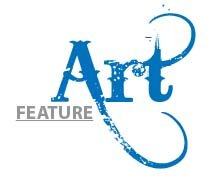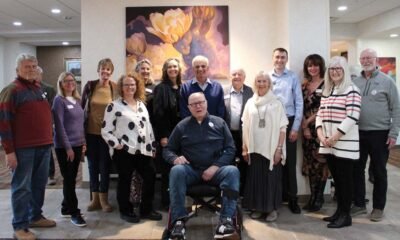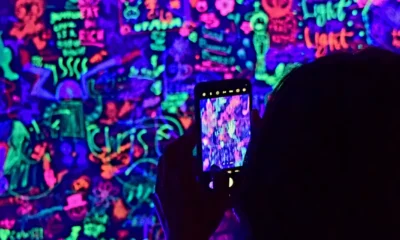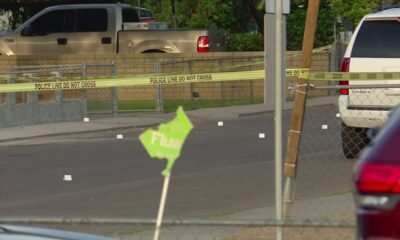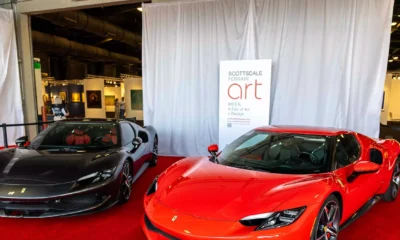arts and culture
Sedona Arts Center Revolutionizes Historic Art Scene
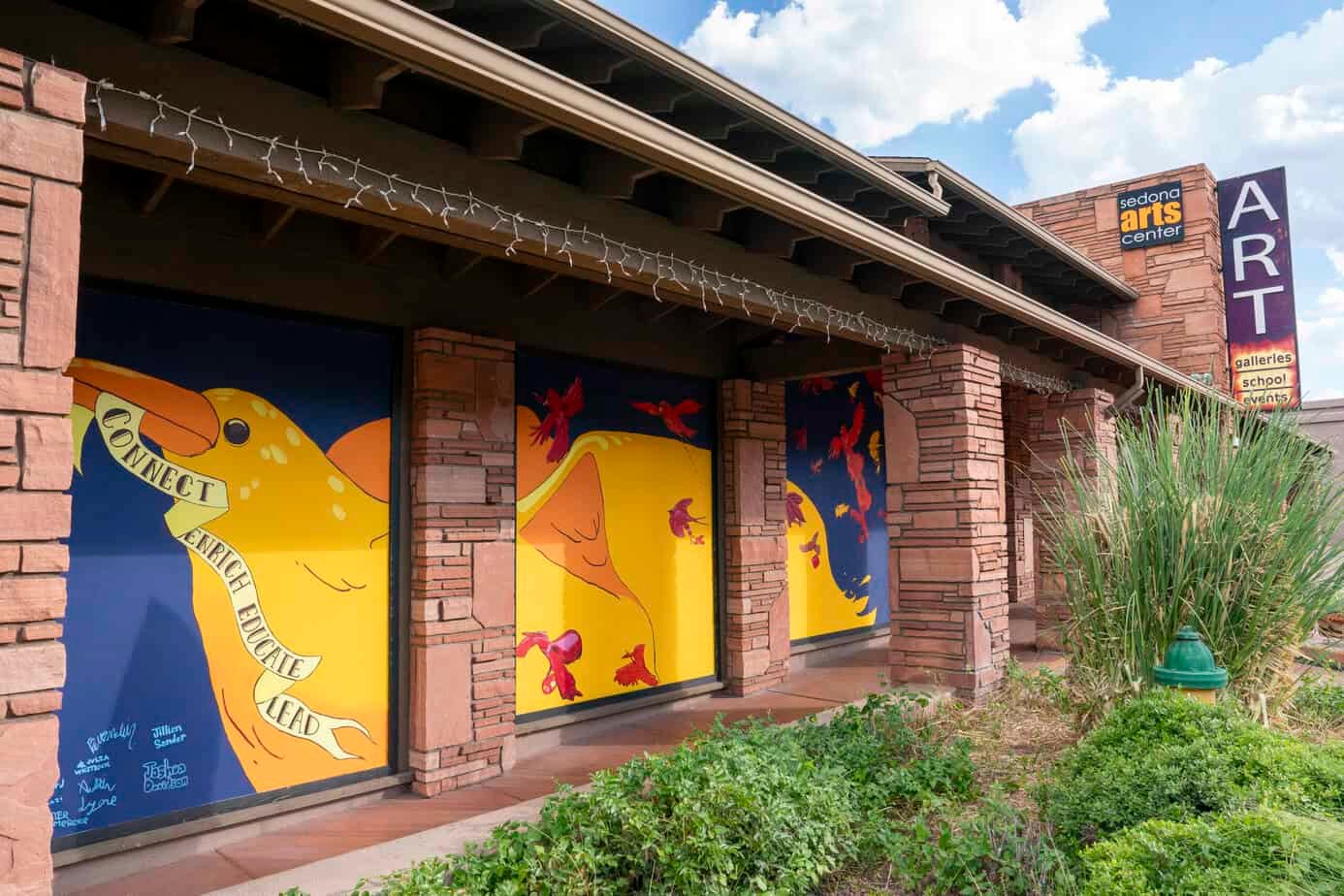
Last month, the city and community of Sedona experienced a significant cultural loss when four prominent pieces of public art were destroyed. These murals, which had been on display at the Sedona Arts Center (SAC) since 1999, were painted over by a group of high school students participating in a SAC summer program.
The murals, created by artists Marlys Powell (now Mallet) and Kevin Karnes, were products of the Sedona Mural Project competition. They were unveiled on September 3, 1999, during SAC’s 19th annual members’ exhibition. The four panels, each seven by ten feet, featured vibrant and semi-abstract depictions of Sedona’s red rock formations, a painting in progress, a woman playing the piano, and a mirror with painted borders. Prior to their removal, the murals were displayed in recessed niches across SAC’s Uptown gallery, facing State Route 89A.
As per the 1999 agreement between SAC and the city of Sedona, the competition was funded by the city’s Department of Arts and Culture, ensuring joint ownership of the murals. The agreement explicitly outlined procedures for the maintenance and potential de-accession of the artwork.
In late June, Mallet received a disturbing message from an artist colleague. “I think there might be something happening with your murals,” the message read. Mallet contacted SAC but was instructed to leave a message for CEO Julie Richard. The uncertainty lingered for days until Richard returned the call. According to Mallet, Richard’s response as to why the murals were painted over was simply, “Because I wanted it done.”
Redhawk, Mallet’s husband, expressed frustration over the lack of communication. Despite attempts to take the murals down, SAC opted to paint over them. This sudden decision raised questions about the authority and criteria used to make such a judgment.
The overpainting was part of SAC’s Gallery 928 program, aimed at giving student artists practical experience. Richard explained that this year’s location was selected after years of consideration. She also admitted a lack of knowledge regarding the murals’ historical significance and ownership.
Mallet, a long-time SAC member, criticized SAC’s oversight. She argued that the murals’ provenance should have been known, given her and Karnes’ involvement in the center for decades. Richard confirmed that 90% of the new murals were completed before the issues came to light.
There is potential for restoring the original murals due to the materials used. Mallet noted that the murals were well-preserved, and the quick overpainting might facilitate restoration. Richard acknowledged this possibility but emphasized that the final decision remains uncertain.
Soon after the incident, Mallet notified Sedona’s Arts and Culture Specialist Nancy Lattanzi. However, Lattanzi referred the matter to City Attorney Kurt Christianson, who confirmed that the city did not approve the murals’ removal and is considering legal action.
Art collector Claudia Ault expressed her dismay, highlighting the murals’ value to the community. Richard assured that SAC is committed to resolving the issue and preventing similar incidents. She emphasized the need for a collaborative effort with the city and implicated parties to find a solution.
Mallet, besides seeking compensation for the destroyed artwork, demands a public apology from SAC and a policy to protect public art from future destruction. The scope of this incident extends beyond the art world, calling into question the stewardship and preservation of cultural heritage in Sedona.


